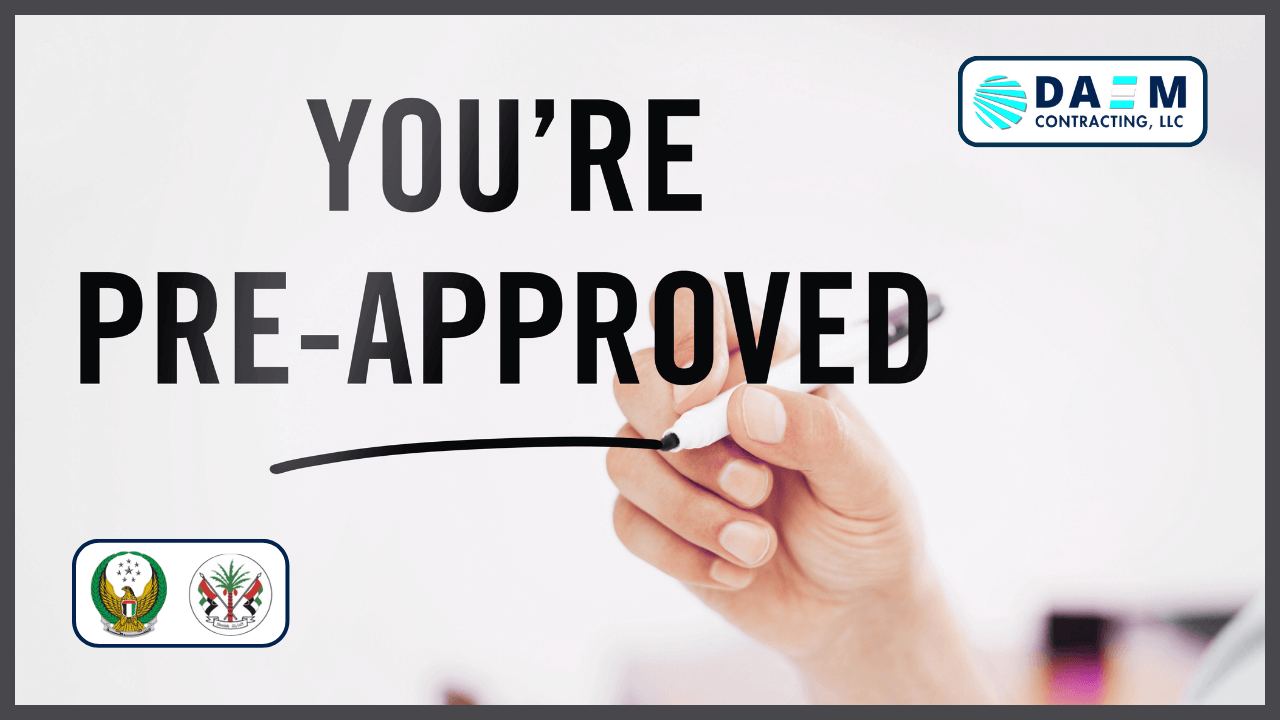- M. Hussam Almahmoud
Civil Defense Inspection Guide with DAEM Contracting LLC
Table of Contents
Are you prepared for unexpected disasters or emergencies? In the fast-paced development of Dubai, civil defense inspection play a pivotal role in ensuring the safety and resilience of communities. This comprehensive guide, enhanced by DAEM Contracting LLC’s expertise, unlocks the secrets of civil defense inspection, providing you with essential knowledge to navigate through the process effectively.
Understanding Civil Defense Inspection with DAEM Contracting LLC
Civil defense inspections are systematic evaluations aimed at assessing the preparedness and resilience of communities against potential disasters or emergencies. These inspections, carried out by trained professionals, evaluate emergency response plans, communication systems, evacuation procedures, and the condition of essential facilities. DAEM Contracting LLC, with its deep understanding of local regulations and extensive experience in safety compliance, stands as a key partner in navigating these inspections successfully.
The Importance of Civil Defense Inspection
Civil defense inspection ensure communities are well-prepared to face emergencies, highlighting areas for improvement and ensuring compliance with safety regulations. DAEM Contracting LLC aids in:
-
- Risk Identification: Identifying potential risks and hazards to develop targeted mitigation strategies.
-
- Infrastructure Readiness: Assessing the readiness of critical infrastructure to ensure effective operation during emergencies.
-
- Compliance with Regulations: Ensuring that all safety measures meet the stringent standards set by local, state, and national authorities.
-
- Community Engagement: Facilitating engagement in preparedness efforts, enhancing the community’s overall safety culture.
DAEM Contracting LLC’s Approach to Civil Defense Inspection
DAEM Contracting LLC’s approach to preparing for civil defense inspection is meticulous and comprehensive, involving:
-
- Reviewing Regulations and Standards: Staying updated with the latest guidelines and safety standards.
-
- Conducting Thorough Assessments: Performing detailed evaluations to identify any areas of non-compliance.
-
- Implementing Improvements: Addressing identified gaps, ensuring all safety systems are functional and up to date.
-
- Facilitating Mock Drills: Testing the effectiveness of emergency response procedures through drills and exercises.
-
- Collaborating with Authorities: Working closely with local government agencies to ensure a coordinated approach to safety and compliance.
Tips for a Successful Civil Defense Inspection
Preparing for a civil defense inspection can be a daunting task, but with careful planning and attention to detail, you can ensure a successful outcome. Here are some tips to help you navigate through the inspection process:
-
- Designate a Lead Coordinator: Choose a dedicated individual or team to oversee the entire inspection process. This person or team will act as the primary liaison with inspectors, guaranteeing that all essential documentation and information are promptly and efficiently provided.
-
- Streamline Documentation: Compile all necessary documentation, such as emergency response plans, maintenance logs, permits, licenses, and any other relevant paperwork. Ensure these documents are well-organized, up-to-date, and easily accessible for quick reference during the inspection.
-
- Execute Practice Inspections: Conduct thorough practice inspections to mirror the actual civil defense inspection process. This will help uncover any potential shortcomings or areas for improvement, allowing you to proactively address them prior to the official inspection.
-
- Ensure Transparent Communication: Maintain open and effective communication with the inspection team throughout the process. Promptly address their inquiries and concerns, offering precise and comprehensive information to aid in a seamless inspection experience.
-
- Promptly Address Violations: Should any violations or immediate issues be identified during the inspection, act swiftly to correct them. Document these corrective actions and submit evidence of compliance, contributing to a positive inspection outcome.
-
- Act on Inspection Feedback: After receiving the inspection report, thoroughly analyze any recommendations or feedback. Formulate and implement a detailed action plan to address these points, making necessary adjustments and improvements to bolster safety measures.
Adhering to these strategies not only demonstrates your commitment to maintaining a safe and prepared environment but also significantly improves the chances of a favorable civil defense inspection outcome.

Civil Defense Inspection Readiness Checklist
To help you stay organized and ensure that you cover all necessary areas during a civil defense inspection, we have prepared a comprehensive checklist. Keep in mind that this checklist is a general guideline, and you should adapt it to your specific situation and local regulations.
1. Emergency Response Strategy:
-
- Is there an established emergency response plan in place?
-
- Does the plan address a broad spectrum of potential emergencies?
-
- How frequently is the plan reviewed and updated for relevance and efficiency?
-
- Are communication protocols within the plan clear and well-documented?
-
- Do the plans include specific evacuation strategies tailored to various scenarios?
2. Infrastructure and Utilities:
-
- Is the condition of all critical infrastructure thoroughly evaluated and maintained?
-
- Are emergency backup systems, including generators, in working order?
-
- What are the ongoing and future strategies for infrastructure maintenance and enhancements?
-
- Is there adequate access to resources required during an emergency, including alternative power solutions?
3. Communication Efficiency:
-
- How reliable and robust are the existing communication systems, especially in emergency scenarios?
-
- In case primary systems fail, what alternative communication methods are in place?
-
- Are emergency and alert systems operational and tested regularly?
-
- Is there an effective protocol for the rapid dissemination of information during an emergency?
4. Evacuation Readiness:
-
- Have evacuation routes been clearly identified, marked, and made accessible?
-
- Are comprehensive traffic and crowd management plans developed for efficient evacuation?
-
- How well-equipped and accessible are the designated emergency shelters?
-
- Are there specific considerations and plans for individuals with special needs during an evacuation?
-
- Is there a clear method for accounting for all individual’s post-evacuation?
5. Equipment and Supply Preparedness:
-
- Are all necessary emergency supplies and equipment readily accessible and in good condition?
-
- Is there a regular maintenance schedule for fire extinguishers and are they easily accessible?
-
- Are first aid supplies fully stocked and checked for currency?
-
- Are emergency power sources like generators and fuel reserves adequately maintained?
-
- Have strategies been developed for the swift replenishment of supplies following an emergency?
Common Violations Found During Civil Defense Inspection
During civil defense inspection, several common violations are often identified. These violations can range from minor issues to significant deficiencies that require immediate attention. Here are some common violations found during civil defense inspection:
-
- Outdated Emergency Response Plans: A common finding is that emergency response plans are not up to date, failing to incorporate the latest safety protocols or neglecting emerging risks. Continuous revision and updates of these plans are vital for maintaining an effective response to emergencies.
-
- Neglected Infrastructure Maintenance: Often, it’s observed that critical infrastructure, such as buildings, utilities, and facilities essential for emergency responses, are inadequately maintained. This neglect can compromise the safety and efficiency of emergency management. Ensuring regular and thorough maintenance is imperative for the resilience and operational readiness of these infrastructures.
-
- Unreliable Communication Systems: Communication breakdowns during emergencies can exacerbate situations, making reliable systems crucial. Inspections frequently reveal that existing communication networks are either unreliable or have not been rigorously tested for emergency scenarios. Establishing robust and redundant communication channels is crucial for effective emergency management.
-
- Obstructed or Unclear Evacuation Routes: Safe and efficient evacuation is a cornerstone of emergency preparedness. However, inspection often uncover evacuation routes that are not clearly marked or physically obstructed, posing significant risks during emergencies. Ensuring these pathways are well-defined and accessible is essential for the safety of all occupants.
-
- Shortage of Emergency Equipment and Supplies: The absence or inadequacy of essential emergency supplies, including first aid kits, fire extinguishers, and backup power solutions, is a frequent violation. Stocking these supplies and ensuring their accessibility and functionality can be the difference between an effective or inadequate emergency response.
Addressing these common violations proactively not only aligns with regulatory compliance but also significantly bolsters the safety and preparedness of the community. It’s crucial to take these findings seriously and implement corrective actions swiftly to mitigate risks and enhance the overall safety environment.
Consequences of Failing a Civil Defense Inspection
Failing a civil defense inspection carries significant consequences, impacting financial, legal, and reputational aspects of a community or organization. Integrating DAEM Contracting LLC into your emergency preparedness efforts can help mitigate these risks effectively:
-
- Fines and Penalties: DAEM can ensure compliance with safety regulations to avoid financial penalties from authorities.
-
- Loss of Funding or Grants: DAEM’s expertise in safety protocols can maintain eligibility for crucial funding or grants supporting emergency preparedness.
-
- Legal Liabilities: Partnering with DAEM reduces the risk of legal issues by addressing potential safety compliance deficiencies before they lead to emergencies.
-
- Reputational Damage: Collaborating with DAEM helps maintain a positive reputation for safety and preparedness, attracting residents, businesses, and investors.
By leveraging DAEM Contracting LLC’s comprehensive safety services, organizations can avoid the adverse outcomes of failing a civil defense inspection, ensuring a safer environment and demonstrating a commitment to high safety standards.
Conclusion
DAEM Contracting LLC is integral to enhancing community safety and compliance with civil defense inspection. Their expertise ensures that communities not only meet but exceed safety standards, addressing emergency preparedness comprehensively. By partnering with DAEM, the daunting process of navigating through inspection becomes streamlined, focusing on risk mitigation, infrastructure resilience, and regulatory adherence.
In summary, DAEM Contracting LLC transcends mere compliance, embodying a commitment to safeguarding communities and fostering a culture of safety excellence. Their role is pivotal in building safer, more resilient communities prepared to face any emergency, demonstrating that with the right expertise, achieving and surpassing safety regulations is not just a requirement but a shared goal for community well-being.
Connect With Us
-
- Website: daemuae.com
-
- Office Address: 20 18 St., RAS AL KHOR Industrial Area, Dubai, UAE
-
- Phone Number: +971 50 884 9955
-
- Email: info@daemuae.com





Comments are closed